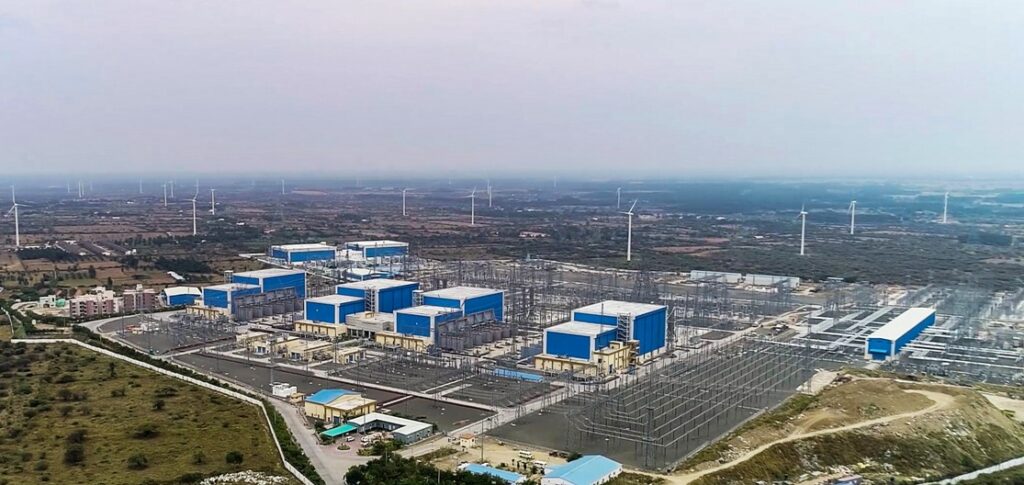The Southern Regional Power Committee (SRPC) has proposed that the transfer capacity of the ±800kV, 6000 MW Raigarh-Pugalur HVDC system in the reverse direction be enhanced from the existing 3,000 MW to 6,000 MW.
The National Committee on Transmission (NCT) is expected to deliberate on this matter in its next meeting scheduled later this month.
Currently, the Raigarh-Pugalur HVDC link is capable of transferring 6,000 MW in the forward direction, which is from Raigarh (Chhattisgarh, Western Region) to Pugalur (Tamil Nadu, Southern Region).
The total cost of the reverse transfer project is estimated to be in the region of Rs.3,200 crore. Of this Rs.1,000 crore will be spent on the HVDC system upgrade, inclusive of the system studies. The remaining Rs.2,200 crore will be needed for the AC system upgrade at both ends – Raigarh (Rs.1,800 crore) and Pugalur (Rs.400 crore).
It is learnt that the HVDC component will be implemented by PGCIL and will not come up under the TBCB route because the project involves upgrade of an existing transmission system built by PGCIL.
The AC system upgrade at Raigarh and Pugalur, through strictly falling under the intrastate transmission system (InSTS), will be treated as an ISTS scheme.
The overall scheme, officially referred to as “Upgradation of ±800kV, 6000 MW Raigarh-Pugalur HVDC system for enhancement of reverse power capacity up to 6000 MW from existing 3000 MW,” could be treated as a single scheme, inclusive of the HVDC and regional AC components. Alternatively, the AC components could come up under the TBCB route.
The final modalities will be decided by NCT in its ensuing meeting.
SRPC has also recommended that PGCIL complete the HVDC portion in a condensed timeframe of 48 months. Meanwhile, PGCIL is understood to have initiated system studies that will be completed over the next 18 months or so.
Significance of reverse-flow capacity
The reverse flow capacity enhancement is significant as it would allow export of surplus generation in the Southern Region to the National Grid. While SR does not have much exportable surplus currently, the situation would change dramatically when wind farms offshore Tamil Nadu become a reality. Besides, for any export of renewable energy from Kerala or western Tamil Nadu, the Raigarh-Pugalur HVDC system is the only corridor available. It may be noted that Kerala is connected to the said HVDC system through an onward ±320kV Pugalur-Thrissur HVDC link.
This reverse capacity upgrade project has been in discussion for over a year and has come up in at least three SPRC meetings since July 2023, and has seen extensive deliberations between CTUIL, PGCIL and transmission utilities of Kerala, Tamil Nadu, Telangana, Andhra Pradesh, Karnataka and Puducherry.
It is also pertinent to note that the Raigarh-Pugalur HVDC link was originally planned as a unidirectional link (from Raigarh to Pugalur) and the existing 3,000 MW reverse-transfer capacity was factored in later.
It is equally pertinent to note that there are currently three ±800kV HVDC lines in India, each with a transfer capacity of 6,000 MW. These are Biswanath-Chariyali-Alipurduar to Agra; Champa-Kurukshetra; and Raigarh-Pugalur. None of these have 100 per cent reverse flow capacity. In fact, Biswanath-Chariyali-Alipurduar to Agra has a reverse flow capacity of just 25 per cent while the same is nil in the case of Champa-Kurukshetra.
Featured photograph (source: Hitachi Energy India) shows the Raigarh-Pugalur HVDC link at the Pugalur end.

